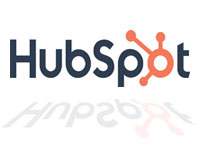A good way to understand what Salesforce articulated at Connections 2018 is to recall the direction it set a few years ago, when CEO Marc Benioff said the company would develop most apps for the small screen first. Translated, that was a concession that handheld devices — phones and tablets — would become the primary devices we’d all use in business. Lots of software vendors took the same position, though arguably few did it as fast.
So far that’s been a good bet, because while this piece is being written on a conventional laptop, it’s highly likely that people will read it on a variety of devices and in a plethora of locations tethered to the Internet through WiFi.
Fast-forward and the device is the primary computing platform, and the next big hurdle to overcome — in the front office at least — is delivering a consistent customer experience across the platforms, including relevant and timely offers and experiences.
Some might have thought the job was done when apps crossed hardware boundaries, but when that happened a new set of expectations from customers — that they could cross boundaries and that their vendors would keep up with them — came into focus. Supply creates its own demand, they say.
Billions of Transactions
It turns out that’s not easy, because along with multiple devices to account for, there’s also the issue of many apps contributing to sussing out just what the customer wants and how to deliver it. The problem is like figuring out the next-best offer, plus understanding who the customer is, and what the customer has done previously with a vendor, and then some.
It’s “real-time personalization at scale for every customer at every vendor site,” Salesforce President Bret Taylor explained in a keynote. In other words, don’t forget this is cloud computing, so the system is using the cloud platform to do all this not just for a single vendor but for all vendors and their customers.
Today, that literally means billions of transactions. In a day, the system processes 2 billion Einstein predictions, sends 15 billion emails, logs 2 million leads, and much more, according to one Connections presentation.
You also could look at it as solving Rubik’s Cube or, more likely, solving simultaneous equations. Essentially this means solving everything at once rather than holding everything constant and solving for one variable at a time the way we do in a classical science experiment.
If you think I am perseverating, think again. This is a measure of where the technology world is today. We’ve done the easy stuff to capture and retrieve data. We’ve figured out how to extract significant information from all of it, too. Now we are trying to attack a pool of data that makes and informs other data in real time.
News From the Stage
That’s why I think Connections 2018 was important. Here are some of the announcements that support my thinking:
- Commerce Cloud enhancements give B2B customers consumer-like shopping experiences. This is in line with the idea of giving people the same kinds of experiences at work that they have in their personal lives.
- Marketing Cloud Interaction Studio might be the trickiest thing to get right, and in some ways may be the key to the whole show. Marketing Cloud helps employees to analyze and manage customer experiences with context (who is the customer, what’s unique about the customer, what can we recommend?) across a brand’s owned online and offline channels.
- Service for Commerce, or adding a service element to a commerce interaction when needed. The demo showed a customer buying shoes and then going back into the event to change the delivery address. It was all mediated by a bot too.
- Salesforce next month will deliver to beta an integration with Google Analytics 360 that will enable marketers to create audiences in Analytics 360 and then activate those audiences for engagement within Marketing Cloud.
- Finally, Commerce Journeys will empower marketers and merchandisers to trigger transactional and behavioral journeys based on customer actions, like abandoning a shopping cart, confirming an account or making a purchase.
My Two Bits
Marketing is arguably the last frontier in CRM, because sales and service apps have been well articulated by now. Nonetheless, we should add that the marketing announcements coming out of Chicago this week blur the lines between the stovepipes very nicely. Those lines — and other lines, like those between front and back office and B2B and B2C processes — are evaporating.
Supporting the move is a Swiss Army knife technology stack that delivers analytics and machine learning to business processes that take us well beyond simple next-best offer approaches. Bots have not replaced people yet, but they are being creatively inserted into niches that are too low-volume or too expensive to insert people. The result is a far better customer experience.
A few years ago I wrote a book, Solve for the Customer,” after examining early online apps for self-service and commerce, and finding their processes woefully inadequate, precisely because there was little or no intelligence built into them. Customers were assumed to be able to use those systems because they were “intuitive,” which only meant that they were available on handheld devices, unfortunately.
Customers were so enraged by those systems that some of them took to the Internet to build blogs and sites castigating vendors. Those sites are still out there, and you can find them by searching a vendor’s name and adding the word “sucks.”
Many of those sites haven’t been maintained in years, though, and there’s no better proof for the efficacy of the revolution in commerce and marketing that is effectively and efficiently leveraging data than that.


























































